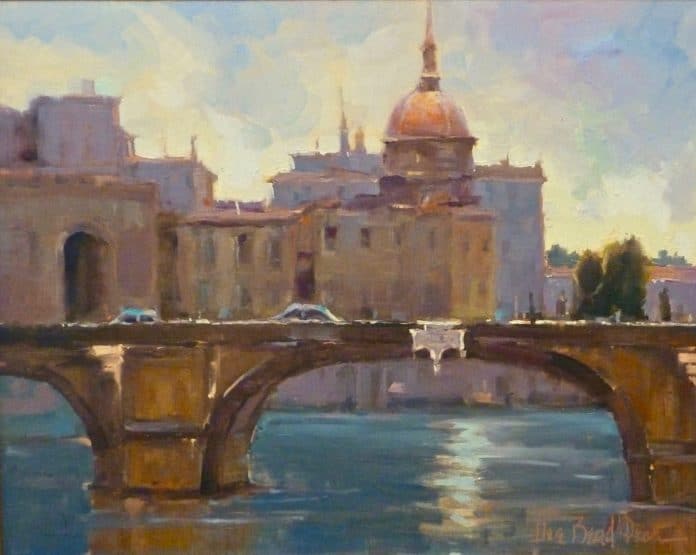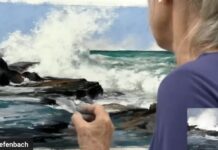After years of painting outdoors and in the studio, South Carolina artist Dee Beard Dean (www.deebearddean.com) has developed ways to quickly capture the sense of light and space in the landscape and design compositions that pull viewers into those scenes.
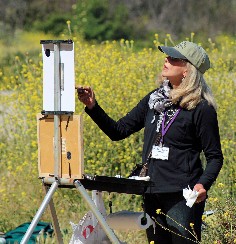
“I spend a lot of time on location studying,” says Dee Beard Dean. “But once I commit to a composition, I have to work quickly to capture the fleeting nuances and the most interesting aspects of the scene. I make a quick compositional sketch defining the focal point and then lead the viewer’s eye towards it.”
To create an effective design while painting outdoors, Dean thinks about shapes, line, color, and value shifts that serve as entrances and exits to the painting. “I think about ways to lead the viewer’s eye from the front of the picture plane into the space and towards the focal point, then out again,” explains the artist. “I also consider whether any of the shapes and patterns impede that movement. For example, if there is an unbroken horizontal line of mountains or trees, I’ll interrupt that line by altering some trees, dropping down the top line of the mountains, or changing the value pattern. I also consider the planes of the landscape — the sky plane, flat plane, vertical plane, and the slanted plane — creating separate values within the shapes that give the illusion of space.”
The tone Dean washes over a panel as she begins to paint will depend on the subject. “I make that determination after I identify a subject, work through a compositional sketch, and assess the arrangement of shapes and values,” she says. “For example, on an overcast, gray day I might apply a thin wash of warm yellow or cool red that will warm the gray colors painted over those washes. Similarly, I often underpaint the complement of the color that dominates a scene, such as red under green foliage or orange under blue water.”
As she works on a linen panel that has a slight texture, Dean paints wet-into-wet until the light changes while painting outdoors. “I like to complete paintings soon after starting them,” she says, “so I am always working into wet paint. But if that’s not possible, if I return the next day, I oil up the surface and blend the new layers of oil colors into those already on the canvas.”
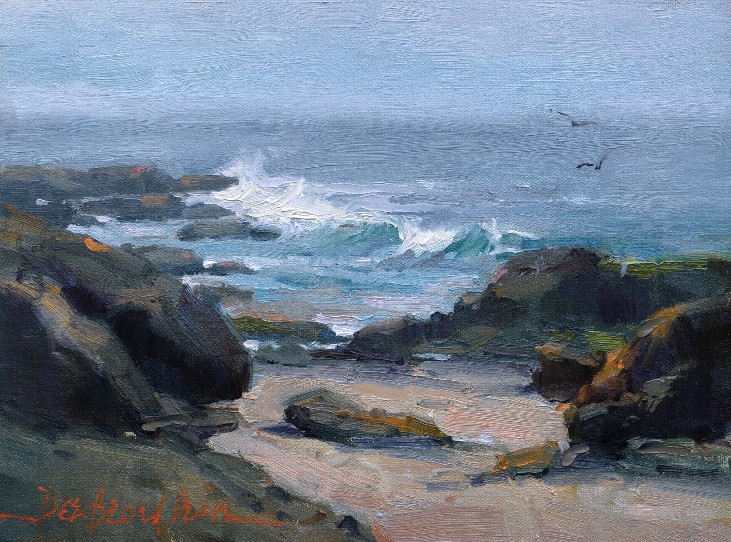
Keys to Efficient Painting Outdoors
Some important aspects of Dean’s efficient painting methods include:
1) using a limited palette, with a warm and cool of each primary color plus white;
2) premixing a base color;
3) using separate brushes for each color mixture; and
4) working with clean colors throughout the painting process.
“There is no sense wasting time mixing each color separately, cleaning and reloading brushes, and struggling with muddy color,” Dean says. “It’s much more important to devote your limited time to analyzing what you are looking at and to painting accurately and deliberately.”
Dean goes on, “Years ago I studied with Ron Riddick, a member of the Cowboy Artists of America, and he introduced me to the idea of premixing bases of pale hues that can be adjusted in intensity and temperature. The mixture can be a combination of titanium white and either yellow, red, or blue, or it might be a common color unifying the scene. The point is to have a mother color that can be adjusted while still lending harmony to a painting. That eliminates having to calculate each new color mixture so it works within the composition of values and colors, and it guarantees that there will be unity between the various parts of the painting.
“The benefits of working from that mother color will be lost if painters use only one brush and keep cleaning it every time they pick up a new load of paint. It’s a waste of time, the solvent on the brush will continually thin the paint, and the residue from one color will muddy the next. It’s far better to have five or six different brushes of varying sizes and shapes, each one of which is loaded with a separate color. They can be held in the non-painting hand or on a clean surface — whatever feels comfortable and keeps one mixture from contaminating another.”
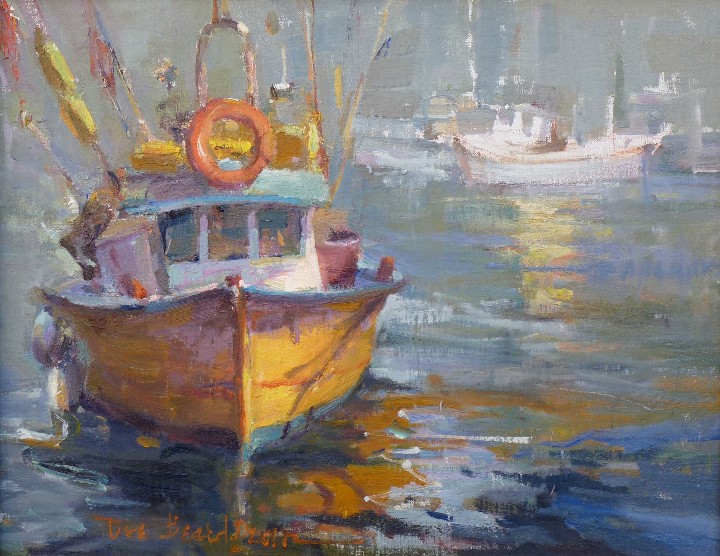
The last recommendation Dean makes is to keep colors clean by putting ample amounts on the palette and avoiding the tendency to scrub the colors with a bristle brush. “If you clean your palette periodically, squeeze out fresh color every time you begin a painting, and avoid scrubbing the brilliance out of the paints,” she says, “you will wind up with paintings that have freshness, clarity, and brilliance.”
To keep the painting process interesting and to continue growing as an artist, Dean often experiments with different approaches to studio and plein air painting. For example, she often uses a palette knife to apply thick color, and also to scrape down a canvas. She says, “Sometimes I get really wonderful results when I scrape down a canvas at the end of the day and leave just a ghost image of the subject that I can restate the next day. It’s a wonderful way of suggesting forms without having to define them with hard edges and thick paint. The thin areas of color will glow as the shapes recede into the landscape and allow me to apply fresh color around the center of interest.”
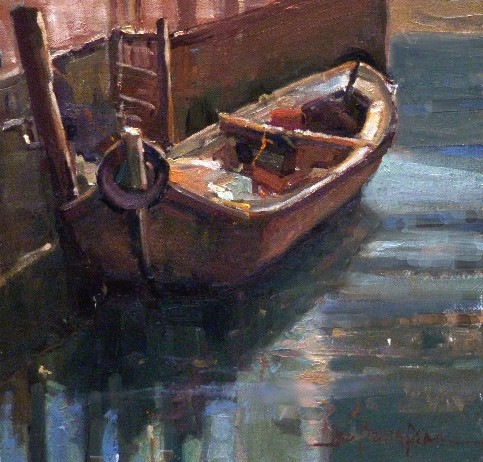
Beyond Painting Outdoors: Evaluation & Judgment
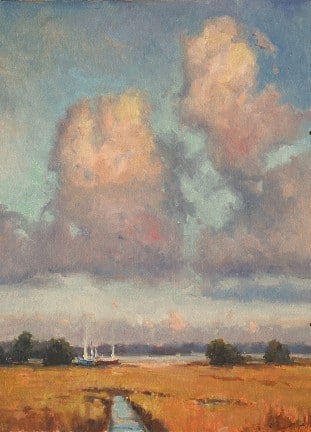
Dean conducts workshops both domestically and abroad and serves frequently as a juror and awards judge. She offers insights into her criteria for selecting images submitted for evaluation. “I look at all the paintings several times by running through digital images submitted to an online jury system or finished paintings hanging in the exhibition,” she says. “The strength of the composition plays a big part in what I select, as does color harmony and originality.
“In a gallery situation, I walk through the show many times and consider which paintings stand out because of the composition, values, brushwork, and because they were fresh and original. In the end, it is a subjective and challenging process, especially for a painter, but I can still try to be objective about the way the artist handled the basic aspects of what makes a good painting.”
***
Originally written by Stephen Doherty for PleinAir Magazine
***
Every year, the Plein Air Convention & Expo brings the foremost artists in their fields to share their best practices and techniques with you for five days of high-impact art instruction. It’s your chance to be part of a family of artists and to learn from the very top painters in the world. Join us in the Great Smoky Mountains, May 20-24, 2024!
And browse more free articles here at OutdoorPainter.com

